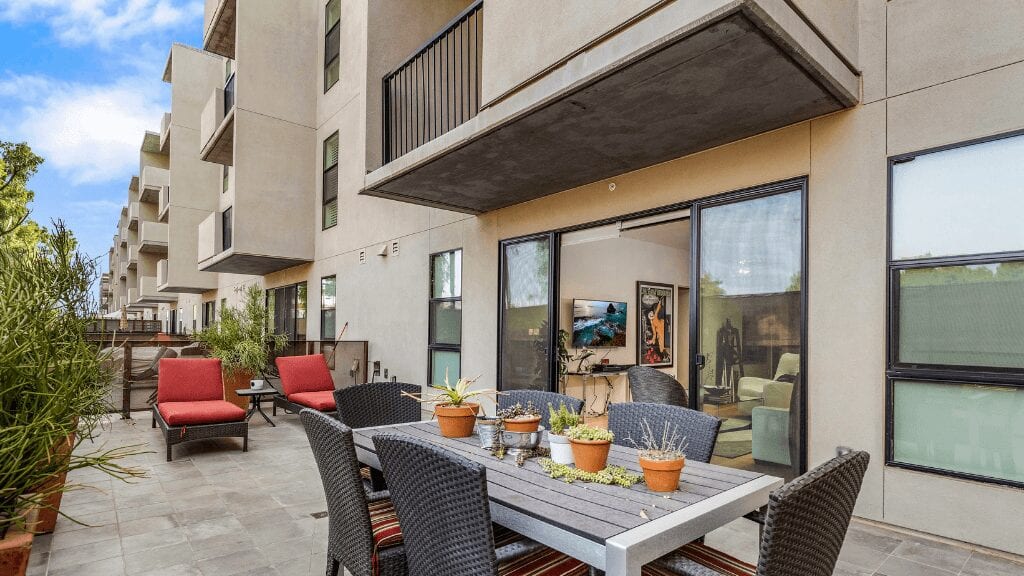5 Secrets Buyers and Sellers Must Know About Virtual Tours
By: Joshua Hill
For years, virtual tours have helped real estate buyers find the perfect home on the Arizona MLS. From long-distance military personnel being relocated, to investors expanding their portfolio, to homeowners looking for a vacation getaway, this technology makes finding a house out of driving distance much easier.
Because of the pandemic, virtual home showing options have experienced a huge spike in popularity. One survey found that nearly 33% of recent home tour requests were for virtual tours, as compared to just 2% pre-pandemic. And it’s easy to see why.

Buyers want to quickly find their next safe haven — one that may need to serve as their office, gym, and even classroom for months to come. And sellers want to limit the number of strangers in their home while still reaching enough potential buyers to get the best offer on their property.
Virtual home tours are the popular thing right now. But, that doesn’t automatically mean they’re the only option for your home buying or selling experience. In this post, we’ll reveal five important secrets behind the virtual real estate scene. Read on to learn how they impact Arizona home buyers and sellers today.
Secret #1: Virtual Tours Have Evolved
In response to the pandemic, we’ve created innovative new ways to show homes while keeping our clients safe and socially-distanced. Here are some terms you might come across as you explore homes with virtual tours.
Traditional virtual tours use 360° Photos, which are images that allow you to see every angle of a space. They allow viewers to move from room to room in a home and look up, down, and all around the interior and exterior. Using a software program, 360° photos are stitched together to create a digital model that looks like a dollhouse. This is called a 3D Tour. Sometimes agents will also add Virtual Staging, which decorates rooms with digital furniture and accents like wallpaper or paint.
Online Walkthroughs feature the actual act of walking around. Either the seller or the agent (depending on time and safety requirements) will create a video by holding their camera or smartphone and simply moving through the home. Online Walkthroughs can be filmed in advance or happen live. If they are live, they can also be referred to as Virtual Showings or Online Open Houses.
A Virtual Showing is often a scheduled, one-on-one video chat that mimics an in-person tour of the home. The agent and viewer start at the exterior and move their way through the property. If your agent offers to FaceTime or Skype you from a home you’re interested in, that is a type of Virtual Showing. In contrast, an Online Open House is more freeform, allowing more viewers to pop in and out of a group video call on apps such as Facebook or Zoom.
Secret #2: Virtual Doesn’t Mean Impersonal
All these styles of virtual tours showcase the property’s details better than static photos ever could. Thankfully, virtual tours are exceptional at facilitating a personal connection, too.
As a buyer, virtual tours give you a feel for the property so you can easily picture yourself in the space and decide if the home’s flow works for your lifestyle. Live video walkthroughs with the real estate agent will give you insights on those crucial non-visual aspects, like creaky floors, cell phone reception, and neighborhood dynamics. Plus, you’ll be able to ask questions and get an insider’s perspective on what’s so great about the home.
For sellers, if your agent recommends using a virtual tour to market your home, you could attract more buyers. And you can be sure that those interested buyers are still getting the up-close and personal look inside your home that will inspire their strongest offers.
Secret #3: Virtual Is Just the First Step to Safe Home Sales
Even as government restrictions begin to ease in some cities, virtual tours are still recommended as a safer way to buy and sell real estate. Buyers don’t have to worry about exposure to anyone who previously visited the property. Sellers cut down on the foot traffic in their homes. Some data even suggest that virtual tours keep agents safer since they’re hosting fewer in-person showings and open houses.
Despite the variety of virtual tours available, some buyers will still need to visit a home themselves in order to feel confident enough to submit an offer. In this situation, listing agents and sellers should work together to come up with a procedure that ensures everyone feels safe and comfortable. Some recommendations include requiring interested buyers to present a pre-qualification letter, conducting tours only by appointment and with essential parties, and asking buyers to self-disclose whether they have COVID-19 or exhibit any symptoms.
On the day of the in-person tour, agents might ask buyers to remain in their vehicle until the scheduled showing time. And to wear protective gear such as face coverings and gloves while inside the home. Many agents will also provide hand sanitizer and ask buyers to refrain from touching any surfaces in the home. Instead, the agent (or seller, prior to the buyers’ arrival) will turn on lights, open doors, and pull back curtains. Then, after everyone has left, the agent will return the home to its original state.
Secret #4: Virtual Can Be Faster
Virtual tours are opening doors for both buyers and sellers, in terms of options available to them. In 2019, buyers viewed an average of 10 homes over a period of 10 weeks before submitting an offer. Thanks to an increased prevalence of virtual tours saving them driving time, they’re able to take a peek inside more homes in a shorter period of time.
With all this viewing activity, it makes sense that sellers whose listings feature virtual tours are receiving more offers. According to one study, virtual tours can add between two and three percent to the sales price of a home. Increased buyer interest has made sellers feel confident in waiting for the right offer.
If you’re a buyer viewing homes for sale from your couch, remember that you’re not alone in your search. Your competition is virtually viewing the same properties you are. So, it’s important to work with your real estate agent to submit a strong offer quickly after finding the home of your dreams.
And for sellers, if a speedy sale is important to you, carefully weigh that against the temptation to entertain more and more offers. This might keep your property on the market up to six percent longer. Your agent should help you choose the right strategy based on your priorities.
Secret #5: Virtual Is Not Always the Right Choice
When you talk to your agent about marketing your home for sale, decide together whether an elaborate virtual plan makes sense. It’s possible that your potential buyers won’t resonate with this type of marketing, that the return on investment ratio isn’t in your favor, or that there are more effective ways to get your listing seen by qualified buyers.
Buyers, you may notice that some listings within your search parameters don’t offer virtual tours. Those homes might not have needed a full virtual marketing package to entice buyers to submit offers. Or, those homes are better marketed through more traditional tactics. Don’t close the door on your dream home because it doesn’t have virtual events and features.
Conclusion
As technology develops, virtual tours will become easier to create and their quality will improve. Coupled with the high demand for them, virtual tour options are likely here to stay. Soon, they may even be a common addition to listings.
If buying or selling a home is on your mind, we’d be happy to discuss how virtual tours can play a part in your real estate experience. Reach out to us today for help finding homes on the Arizona MLS that have virtual tours or to chat about adding a virtual tour to your upcoming listing.

